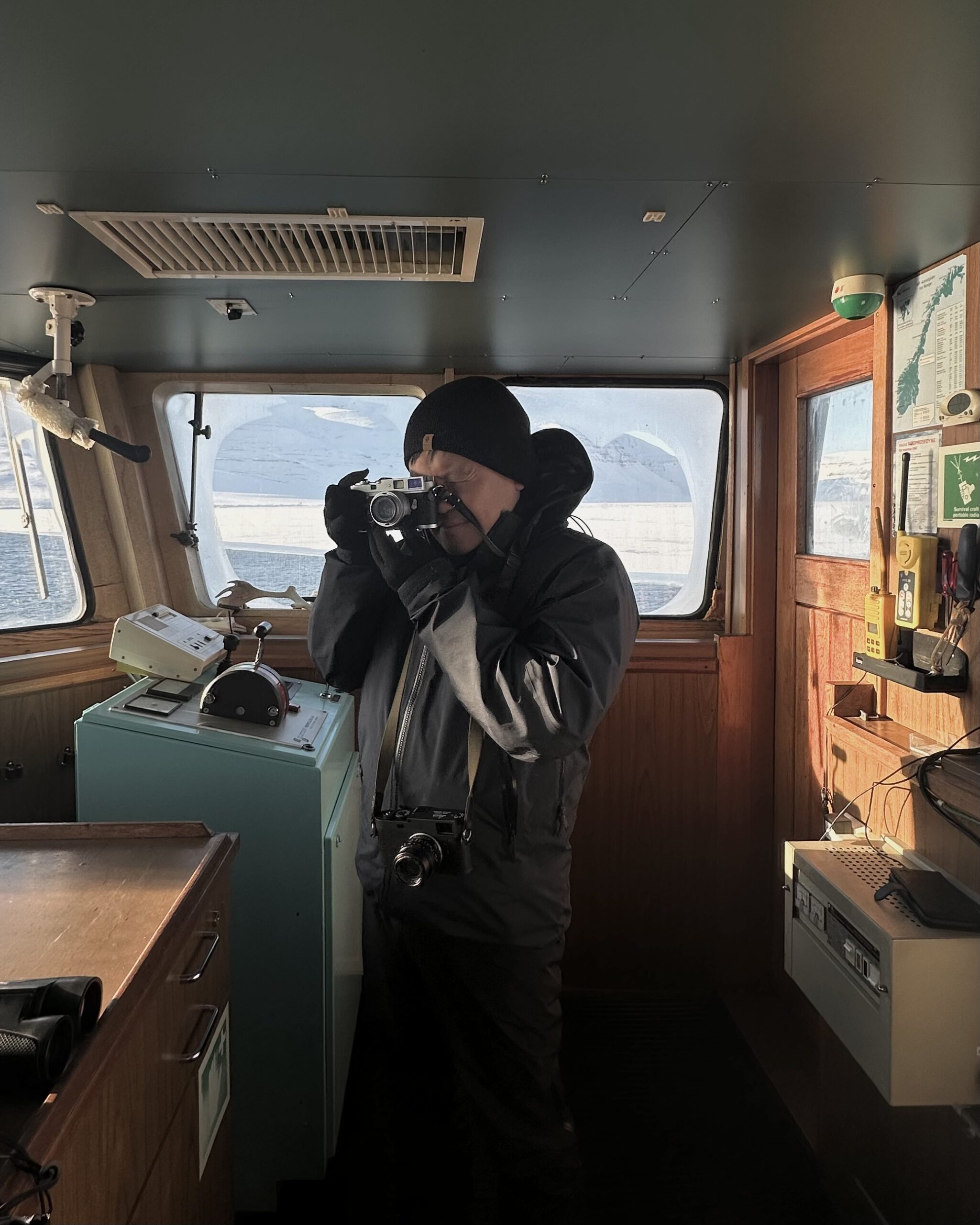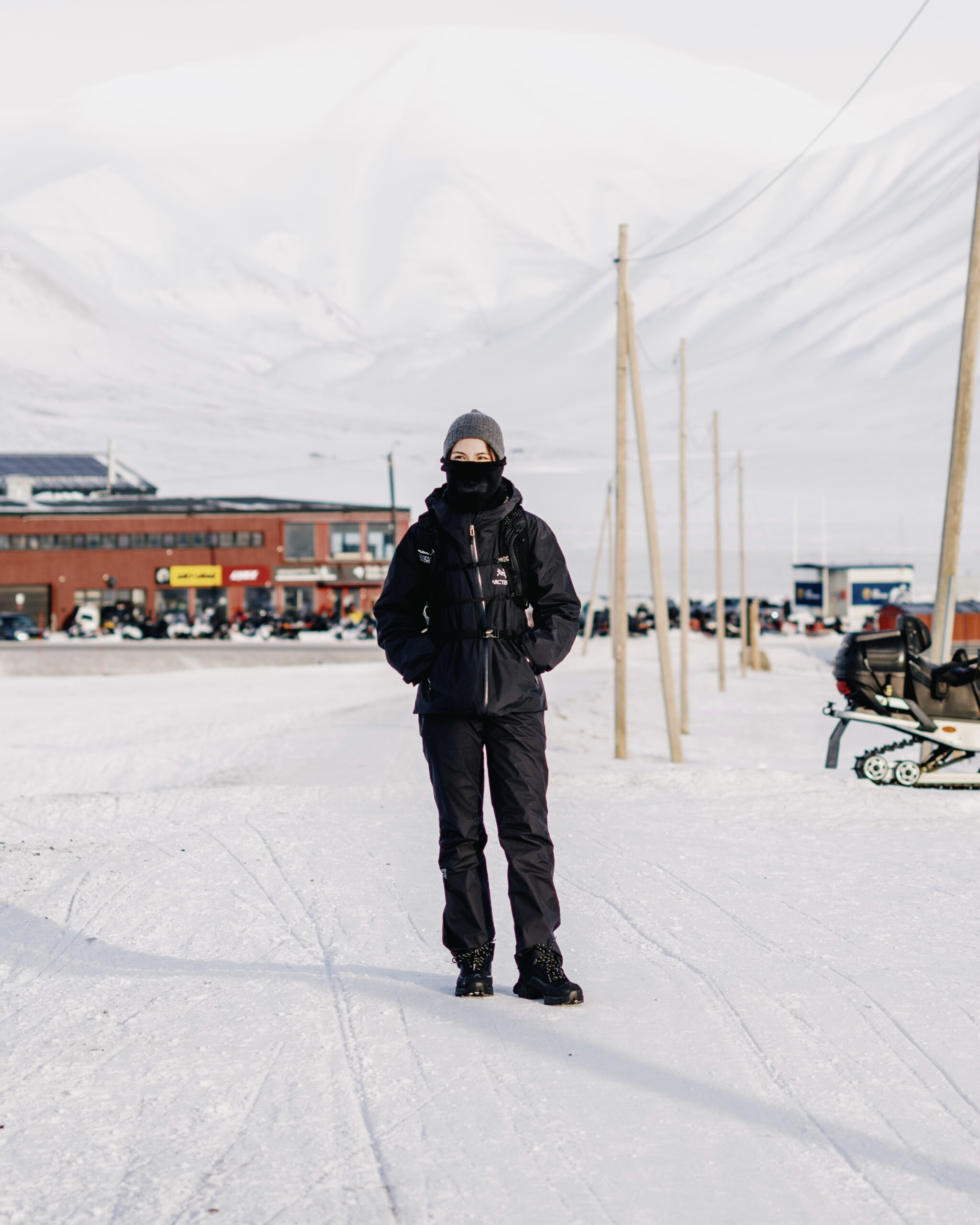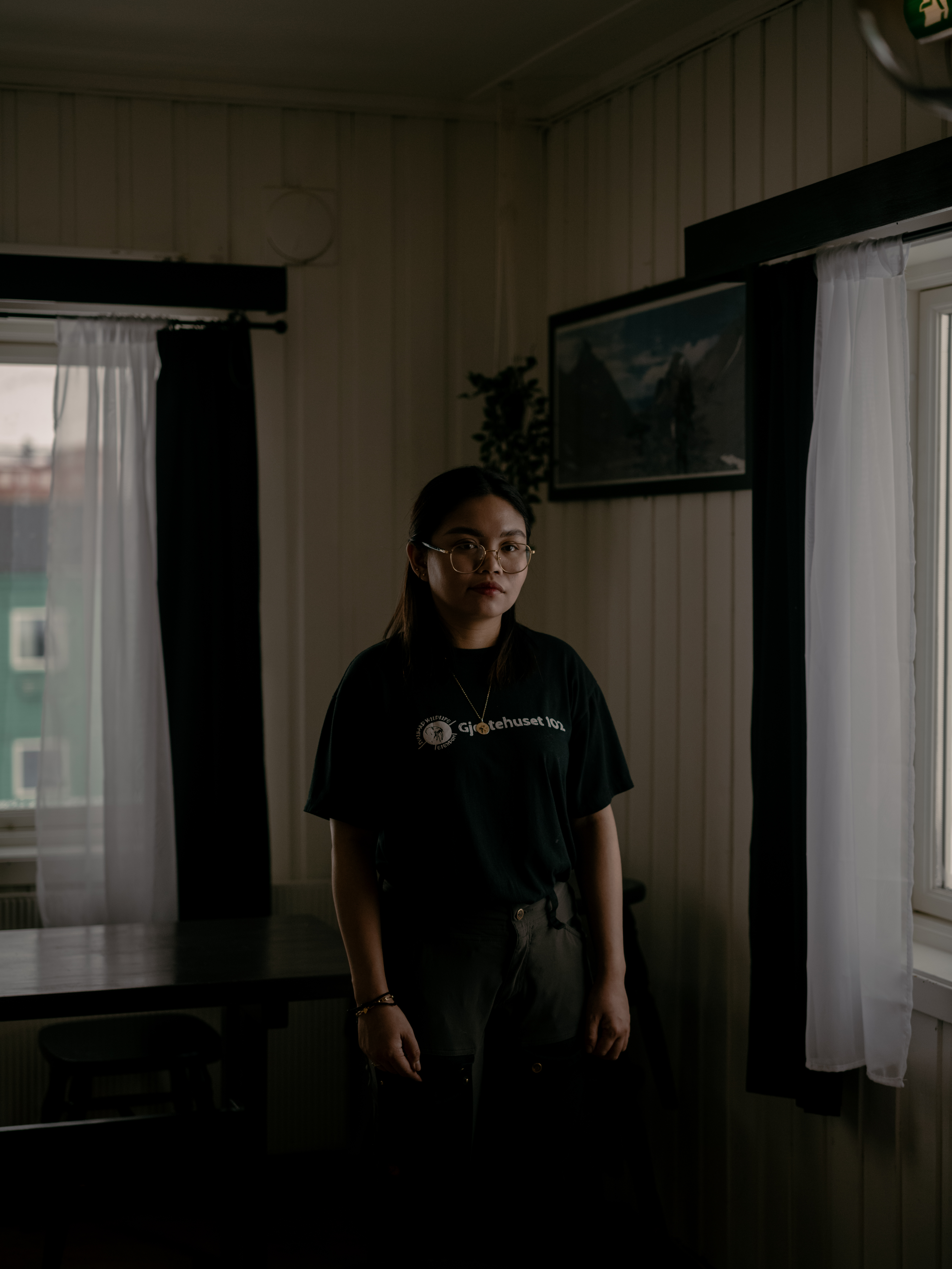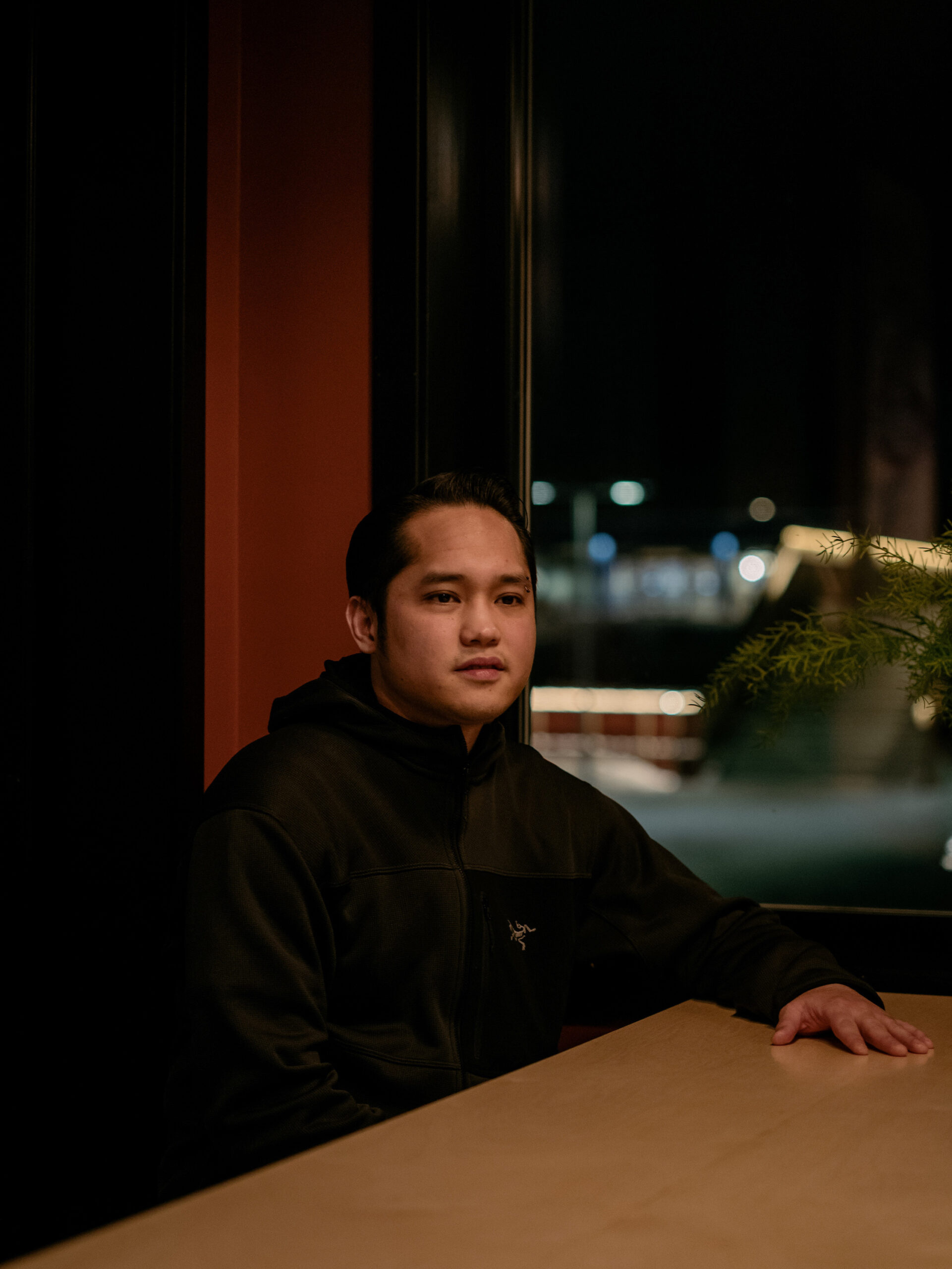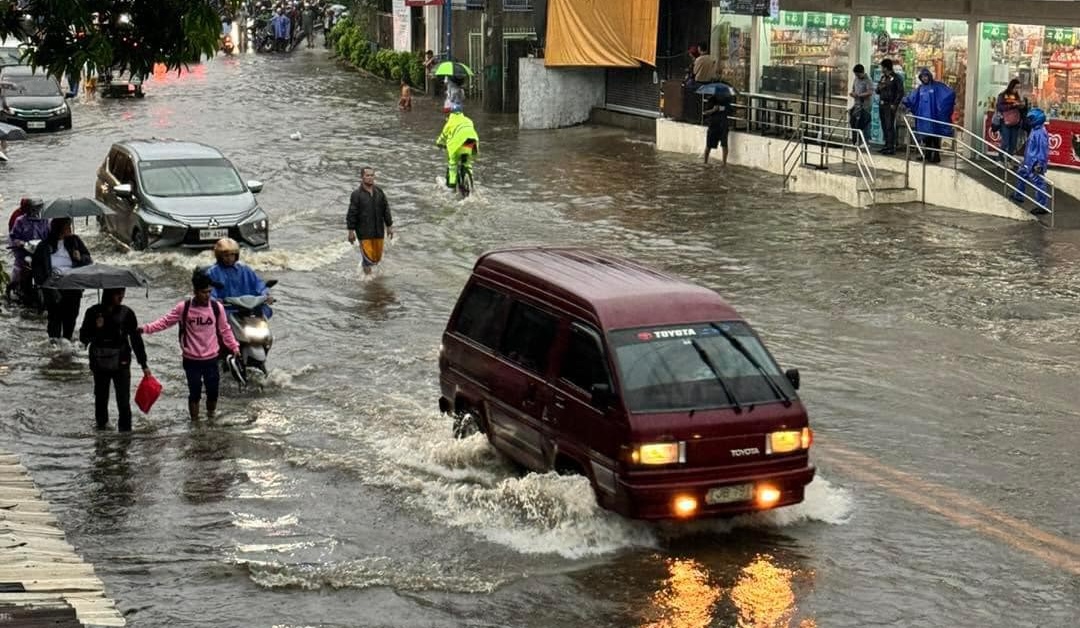Bryan and Maxine Kong traveled to the ends of the earth to capture the otherworldly terrain of one of the most unforgiving and uninhabitable, yet deeply riveting places on the planet
Bryan Kong, a Chinese-Filipino photographer, restaurateur, and drummer of indie rock band Taken by Cars, and his entrepreneur wife, Maxine Kong, journeyed to the northernmost human settlement on earth, Longyearbyen.
Located in the Norwegian territory of Svalbard, the remote settlement is home to about 2,500 residents, approximately 200 of whom are Filipinos. Amidst the bitter Arctic cold, Bryan and Maxine met with a number of Filipinos who, through the years, have integrated themselves within the social fabric of Longyearbyen and our fellow countrymen whose stories have largely remained untold.
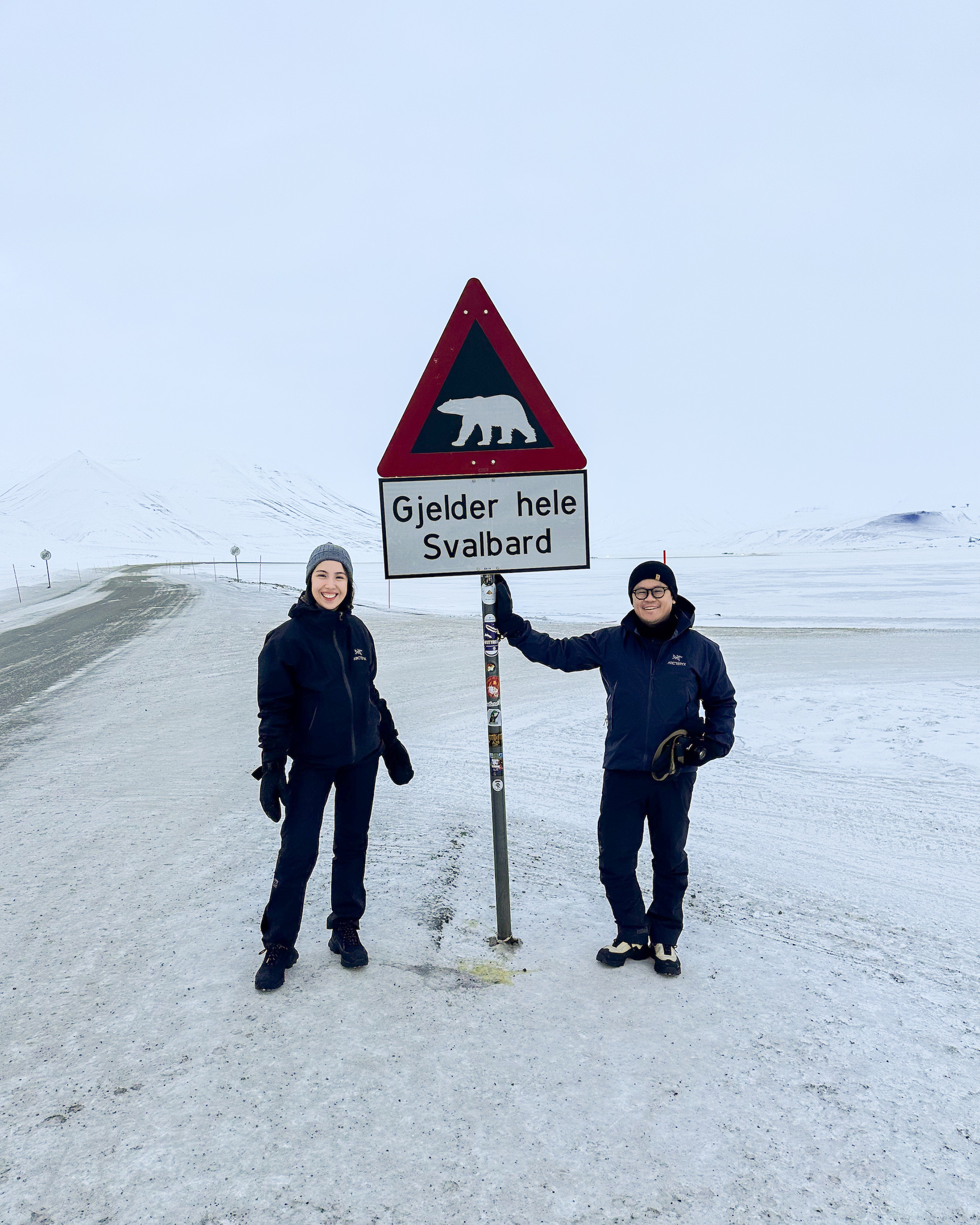
“Although a great number of people in Longyearbyen come and go, several Pinoys have been based there for over a decade. Some have been living there for around 16 years. Some already built families,” says Bryan.
Armed with his film and digital cameras, drones, iPhones, and camcorders, Bryan photographed the otherworldly terrain of one of the most unforgiving and uninhabitable yet deeply captivating and riveting places on the planet.
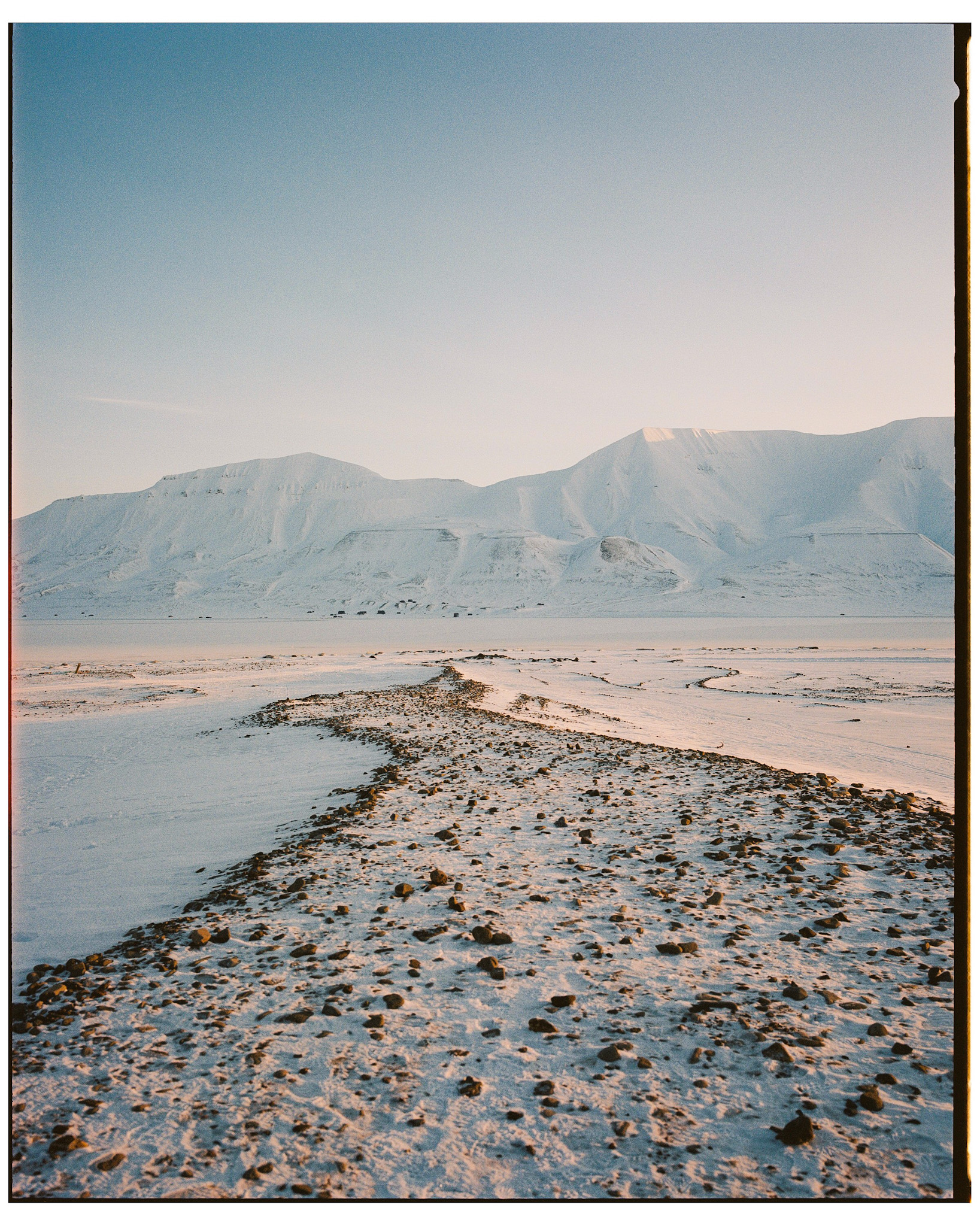
Of all places, why did you decide to embark on an expedition to Longyearbyen?
BK: Ten years ago, I stumbled upon a documentary featuring a lone Russian tour guide who remained in an abandoned mining town near the North Pole. What fascinated me was the thought of someone choosing to live alone in such a solitary and rugged landscape. At that time, I was also beginning my journey in photography and was particularly inspired by Steve McCurry’s work. This experience placed Svalbard at the top of my bucket list, where it has remained ever since.
All aboard the world’s northernmost fjord-cruise
MK: I come from a family with a deep passion for travel. I vividly remember how my parents made it a point to take my siblings and me to a new destination outside the Philippines every year since we were children. This experience undoubtedly fueled my curiosity about exploring new places—a curiosity I carried into my married life. So when Bryan suggested an Arctic expedition to the northernmost town in the world, I was all in.
Can you walk us through the journey to the northernmost human settlement on earth? What were the challenges and pitfalls of a trip such as this one?
BK: Besides organizing our travel itinerary, preparing our Arctic gear was a major priority, especially deciding on thermal layers and my photography equipment. During our stay, we had the privilege of speaking with a Norwegian photographer who provided invaluable advice for handling the extreme cold. He showed us how to use heat packs for our camera bags, adjust the white balance on our cameras, and enclose our gadgets in ziplock pouches to prevent moisture from entering when moving from the frigid outdoors to the warmth indoors. I also learned the importance of winding the film slowly, as the strip can easily crack in the cold.

MK: We learned that most people visit Longyearbyen during the peak of summer when the waters are more forgiving for wildlife sightings and temperatures are warmer. However, we chose to explore this part of the world during the tail-end of winter and the onset of spring.
This timing presented more challenges for visiting Longyearbyen, requiring a few extra months of meticulous preparation, especially since we needed to equip ourselves for the Arctic tundra, where temperatures can plummet to as low as -30 degrees Celsius. True enough, midway through one of our snowmobile expeditions, all our digital batteries, including those in our cameras and phones, died due to the extreme cold. Despite these challenges and pitfalls, our only regret was not staying longer. We had hoped to have more time to fully immerse ourselves in this unique town. I feel like we only scratched the surface. We will definitely need to go back.
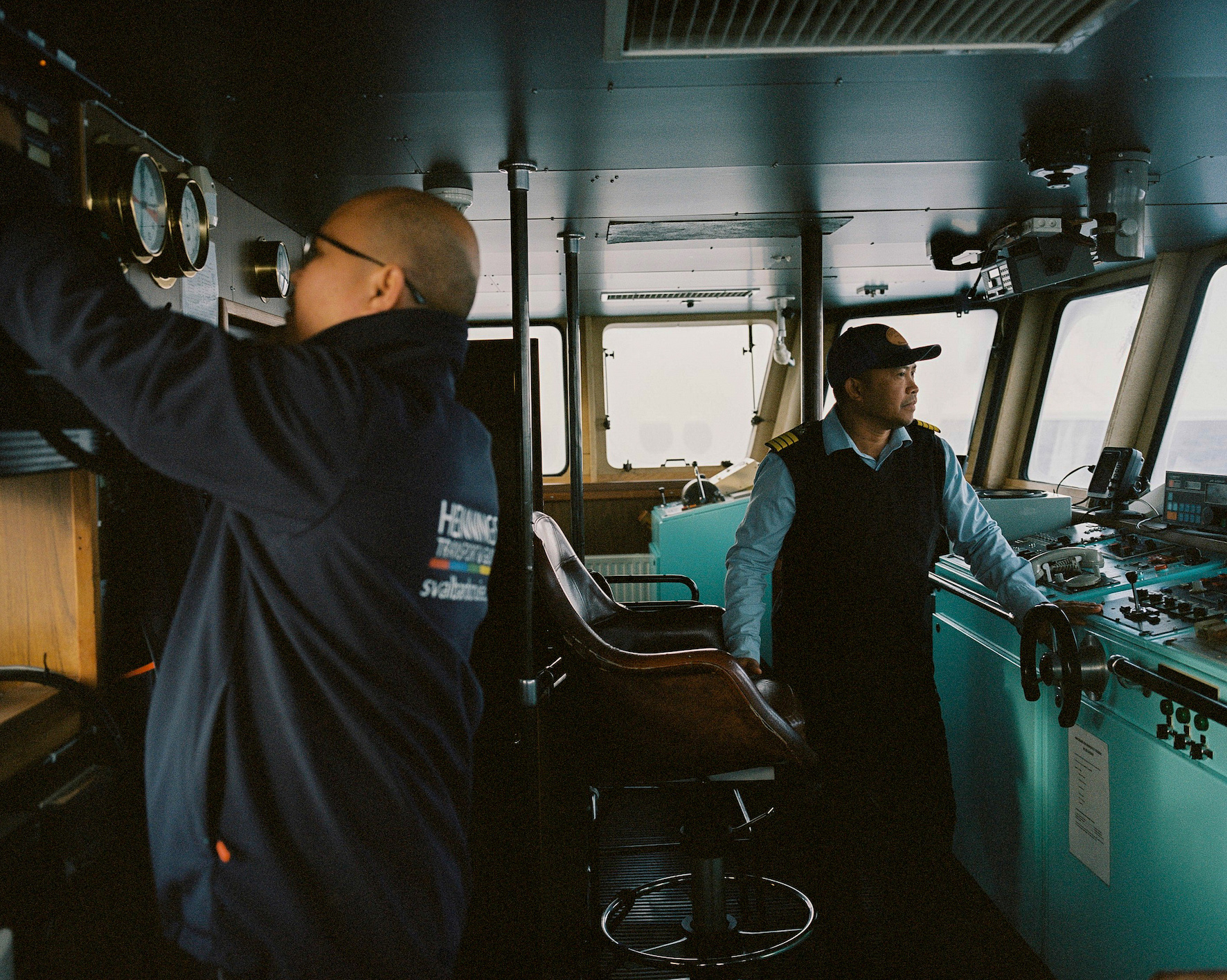
Can you share with us the most unforgettable anecdotes about finally meeting and photographing the community of Filipinos living in Svalbard for over a decade?
BK: Our kababayans there are truly resourceful. Despite the media’s portrayal of “OFWs” as primarily blue-collar workers—this can be true to an extent—but I spent time with Filipinos who have worked their way up to becoming entrepreneurs and restaurateurs. Being one myself, I feel a great sense of pride for our fellow Filipinos in Svalbard. Without them, I can honestly say that this remote Norwegian-Russian settlement would struggle.
MK: As an avid Filipino traveler, it becomes easy to spot fellow Filipinos abroad. Even without speaking, there’s a familiarity in the way we communicate non-verbally.
Meeting Filipinos in Svalbard was both surprising and exciting. Their warmth in such a cold and remote place immediately drew us in. It was always a joy to ask, “Filipino po kayo?” and see their smiles. We learned that not many Filipinos travel to that part of the world, and even fewer have time to connect with the local community. This made our interactions feel incredibly special. We spent our days on Arctic tours from 9 a.m. to 4 p.m., but our evenings were reserved for sharing meals and stories—an unplanned yet cherished part of our trip.
One evening, a Filipina we met in a grocery store invited us to her home. There, we learned how she uprooted her life to build a family in the northernmost town in the world over the past 19 years. Her story reminded us of Filipino resilience. It was astonishing to hear how a Filipina from a tropical country, who had no prior knowledge of Svalbard, could adapt to a place with months where the sun never sets and months where the sun never rises, where polar bears outnumber people, and where no burials or births can take place. Despite our exhaustion from a long day of snowmobiling, we stayed up talking until 1 a.m., engrossed in her life story and those of fellow Filipinos. Another memorable experience was joining a staff meal at the hotel’s Japanese restaurant, managed by a Filipino chef. The meal featured a unique dish called Pares-Ramen. Staff meals are intimate gatherings where the team comes together as a family. Participating in these moments filled us with gratitude, reminding us of the strong sense of community that Filipinos maintain, no matter where in the world we are.
BK: Being able to visually capture the stories of our kababayans in Svalbard was a very heartwarming experience. As I photographed them, I sensed a tension between familiarity and wonder. The warmth of the Filipinos could be felt through the cold, rugged geography that seemed very alien to me. I felt right at home despite being so far from where I live. It was a unique experience.
READ: This is how I ate my way around snowy Sapporo
The Arctic is known for seasons of endless days (midnight sun) and endless nights (polar night) and Longyearbyen is known as a town of transient inhabitants. How do you think these geographical and sociological factors affect the Filipino diaspora community in Svalbard?
BK: Most locals agree that Svalbard isn’t really a place for human inhabitants because of the rugged nature, polar nights and/or the midnight sun season. Ironically, this is also the very thing that draws people and tourism to this place—to experience extreme nature. Relating this to our culture as Filipinos, you can really see how fast we adapt as a people—even socially. The more foreign a place, the more banded together we become as a people. The extreme cold, to a certain extent, makes Filipinos warmer towards each other.
MK: Throughout our encounters with Filipinos living in Svalbard, we observed that they come together even more in times of adversity. Amid the isolation of the extreme Arctic backdrop and its transient population, issues like depression can be common. However, the Filipino diaspora community strengthens their sense of morale and home, creating a supportive and resilient network that thrives despite the challenges.
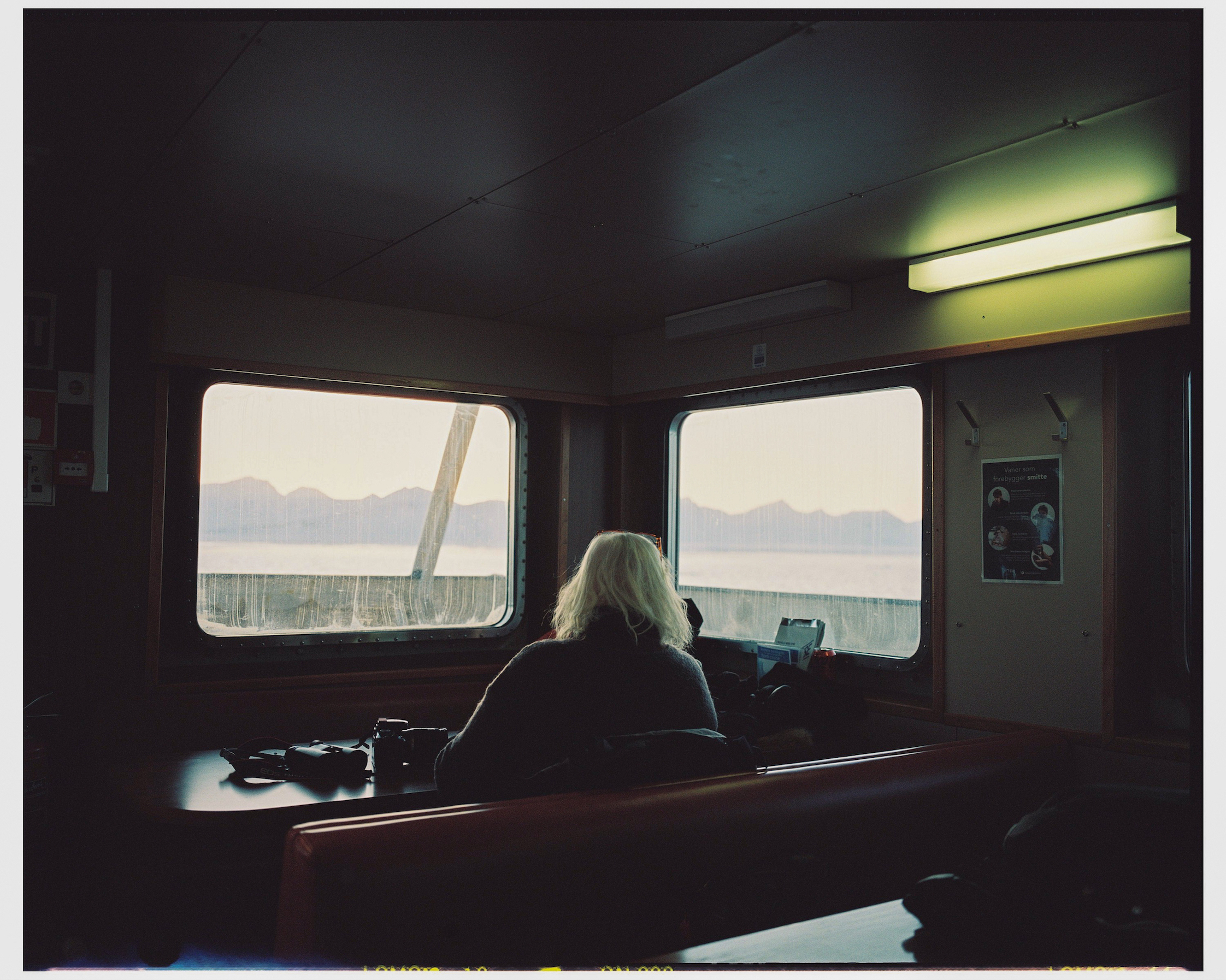
After capturing the lives of the diaspora Filipinos in Svalbard, did your own understanding of being Filipino change in any way?
BK: No, it actually reinforced the idea that we are truly resourceful and creative as a people. A chef I met prepared his broth from scratch, using only his taste and unconventional ingredients. I was amazed that it tasted just like ramen from Japan. It was a great reminder of the remarkable creativity of our fellow Filipinos.
MK: It has always been a common perception that Filipinos, regardless of where they are, foster a sense of home through resilience and unity while preserving their sense of identity and adapting to new surroundings. This is something I have always admired about our country and its people. Meeting Filipinos in Svalbard reinforced this belief even more, knowing how harsh the environmental backdrop is. Despite the extreme cold, isolation, and challenges, they create warm, supportive communities, demonstrating the extraordinary ability to turn any place into a home. Their strength, adaptability, and unwavering spirit in such a remote, unforgiving landscape are truly inspiring, highlighting the remarkable essence of the Filipino people.
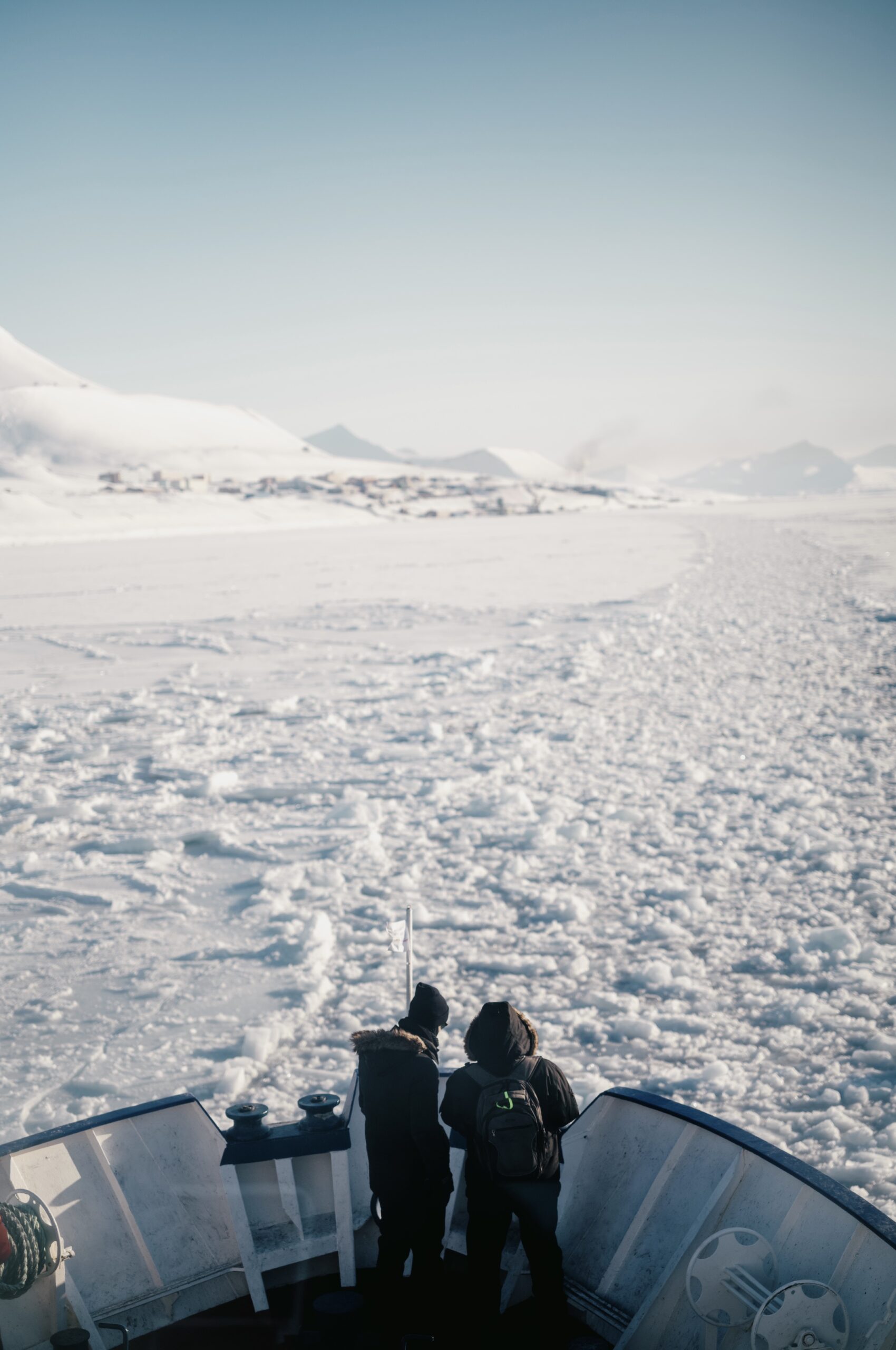
Maxine — How important are expeditions such as the one you made to Svalbard to your journey as a creative couple?
MK: Growing up in a family of avid travelers and entrepreneurs shaped my worldview. My paternal grandparents were entrepreneurs from the province, and my maternal grandfather was an ambassador and foreign service officer. This diverse background sparked my curiosity for travel and commerce. Although I pursued a degree in public administration with aspirations of joining the foreign service, my career led me to marketing and eventually to starting a business with my husband. Despite this shift, my passion for travel and exploring cultures remains central. I’ve learned that the essence of a place lies in its people, enriching my connection to my own culture and deepening my understanding of others. Travel pushes us out of our comfort zones, exposing us to new ideas that influence our lives and work. Our work is an extension of cultural exploration, with food and art reflecting the broader cultural tapestry we engage with.
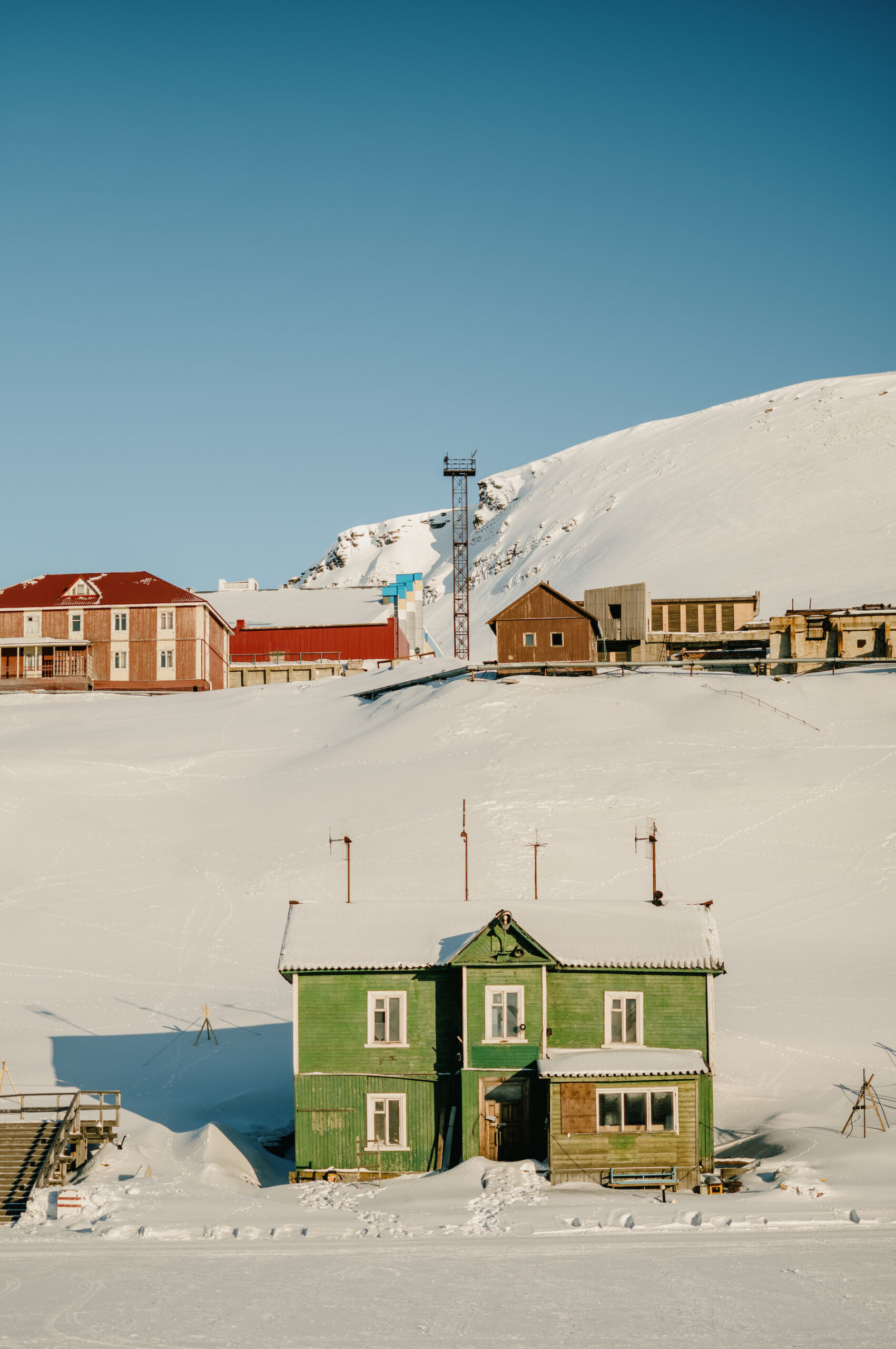
Brian — If you were to have a single sentence quote about your journey as a photographer in Longyearbyen, what would it be?
BK: “Sometimes, it can be the most ordinary moment that creates an extraordinary piece of art.”
This quote by Rick Rubin perfectly encapsulates my experience in Longyearbyen. Meeting our kababayans and being welcomed into their homes transported me back to the Philippines. These simple acts of hospitality and connection felt like a profound expression of human warmth and resilience, reminding me that the most meaningful and beautiful moments often arise from the ordinary. Shooting everyday life may seem mundane, but there is beauty and joy in many seemingly ordinary things.
How do your photography expeditions to the farthest and most unexpected places on earth affect, if any, the many hats that you wear as a multifaceted artist and entrepreneur?
BK: We are all an accumulation of our experiences. Everything we have encountered, from childhood to the last person we met, can inspire us to express ourselves, whether through photography or food. I always frame anything I create, whether it’s a new flavor or just a photograph, through the lens of what I feel, and this usually stems from something very subconscious and deeply personal.
Your images have captured with poignancy, people, landscapes, and wildlife in places that are diametrically opposite our tropical/archipelagic context. Is there an underlying reason for this?
BK: Reflecting on this, I now realize how growing up with National Geographic magazines scattered around the house may have influenced my subconscious. These photo magazines, which I would read when bored, fostered my natural curiosity from a very young age. My eagerness to explore subjects and themes beyond our tropical backdrop goes hand in hand with my desire to experience and capture new things.
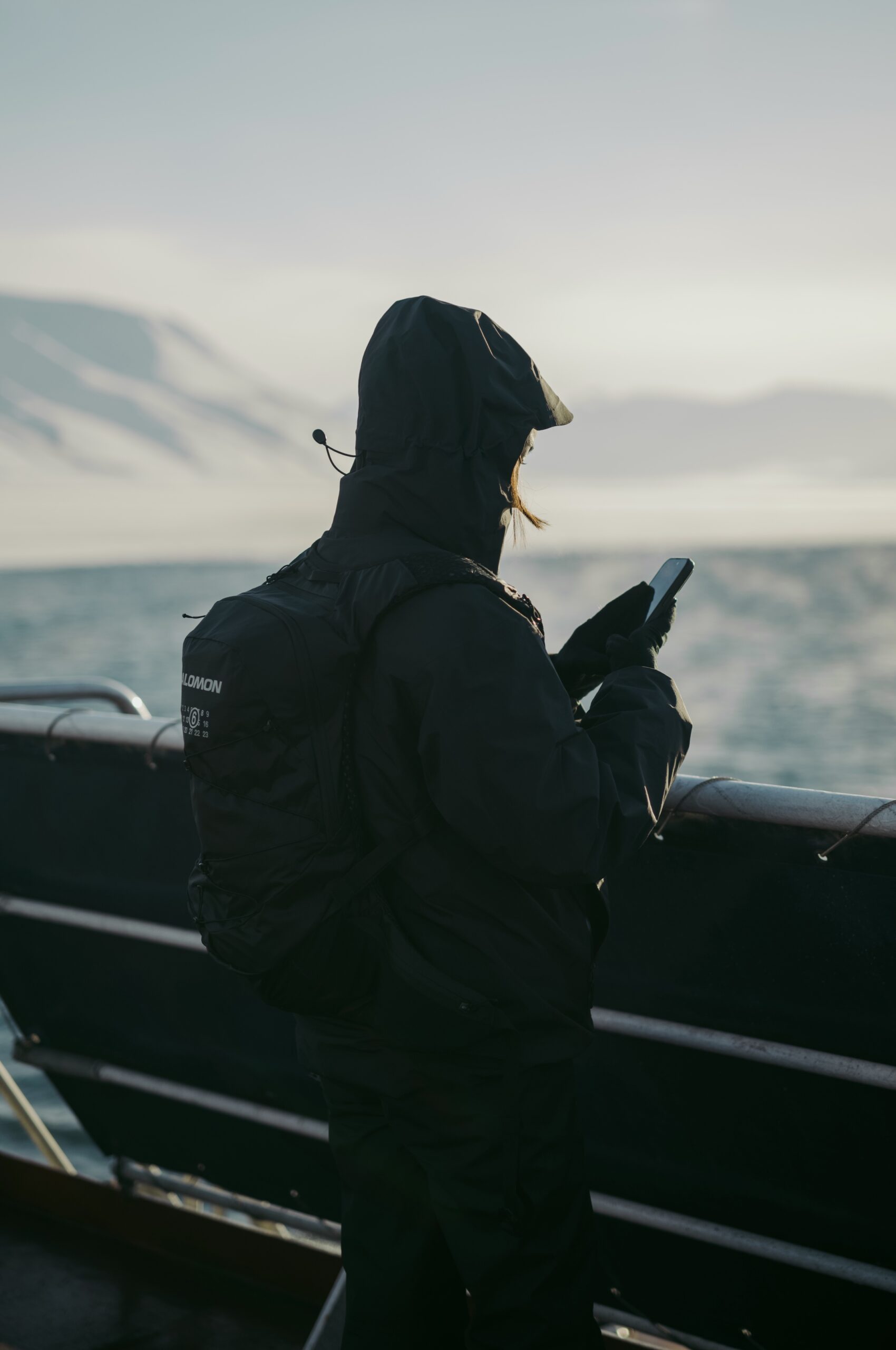
Can you name at least three photographers whose visual languages/images have resonated with you the most?
BK: A few of the Filipino photographers I admire are Renzo Navarro, who currently has an outstanding exhibit in Chino Roces; Hannah Reyes Morales, whose job I envy for her incredible ability to document people and places; Colin Dancel for her fresh approach to commercial portraiture; and Jake Verzosa, known for his poignant portraits of our cultural figures.
Why did you choose to become a photographer/artist?
BK: I don’t really see myself as a “photographer” but more as a curious artist. Who knows what art medium I might explore next? That’s why I dislike labels. It’s quite liberating to be able to start creating with another random medium.
READ: Meet the 22-year-old Filipina making tech and business news fun and digestible


